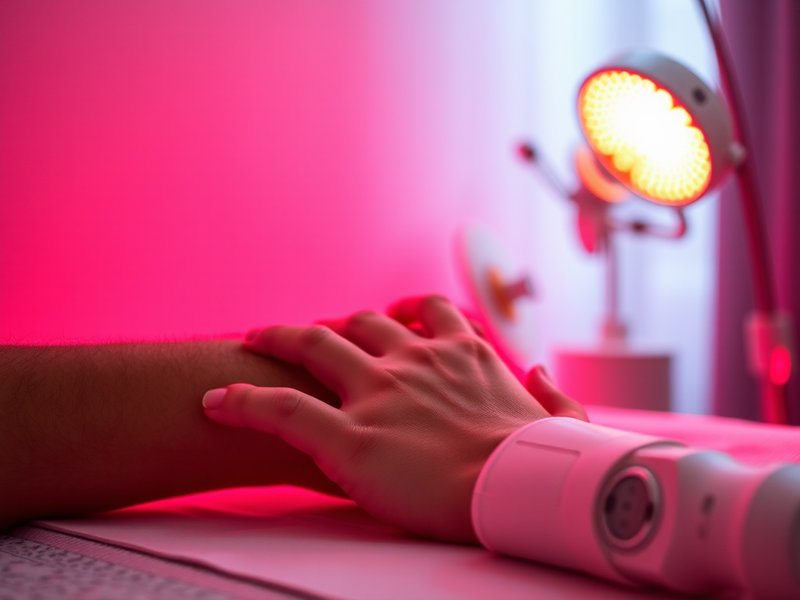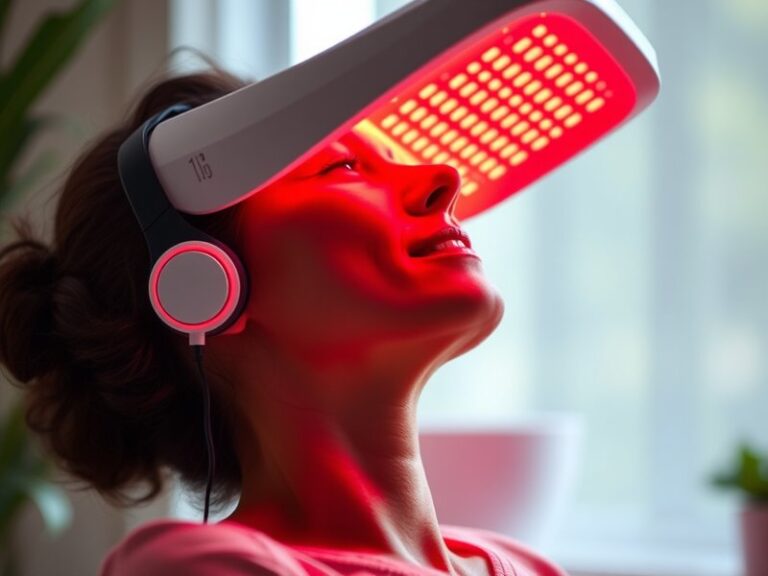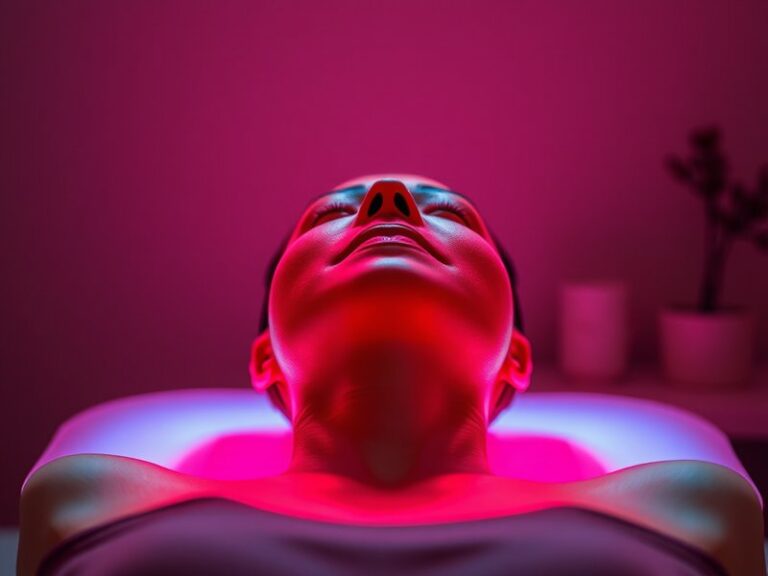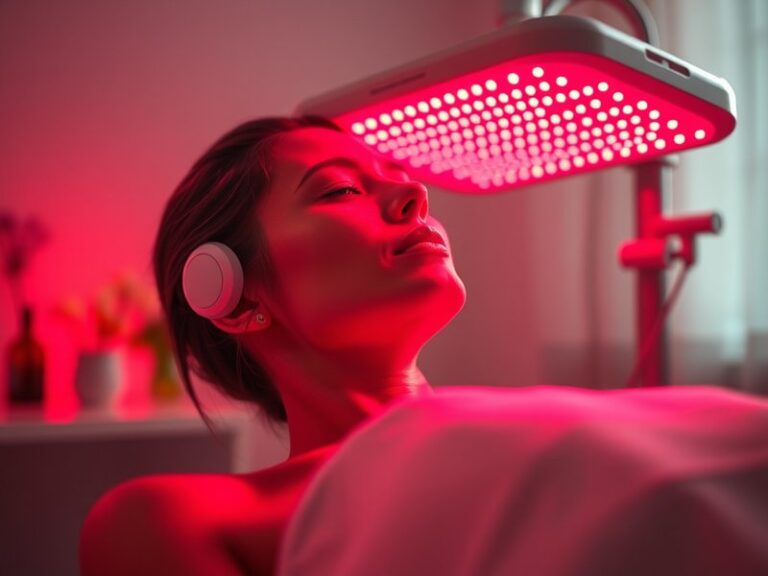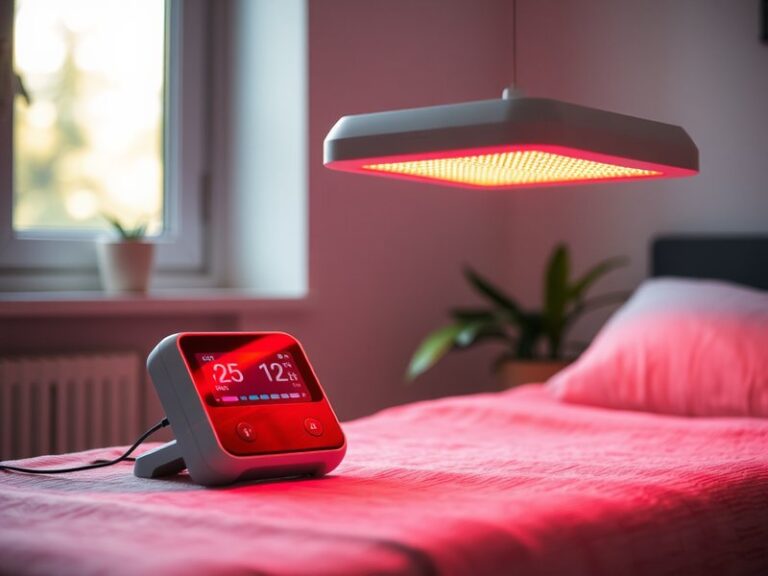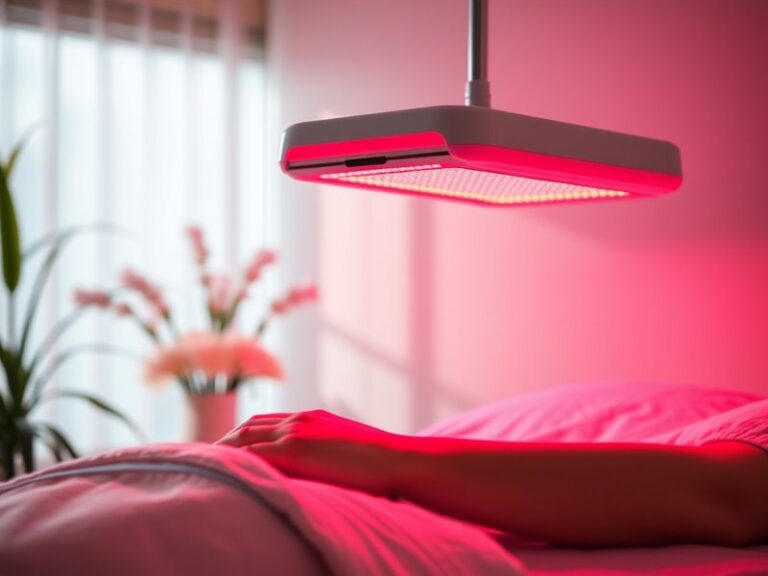Does Red Light Therapy Help Arthritis?
Does Red Light Therapy Help Arthritis?
Could a simple light therapy be the key to alleviating arthritis symptoms?
Arthritis affects millions worldwide, causing pain, inflammation, and reduced mobility. Among various treatments, red light therapy has emerged as a potential alternative for managing arthritis symptoms. This article will explore the efficacy of red light therapy in helping arthritis, its benefits, considerations before use, and alternatives available for those seeking relief.
Key Takeaways
- Red light therapy may reduce inflammation and pain associated with arthritis.
- Some studies suggest significant improvement in joint function and mobility after treatment.
- Red light therapy is a non-invasive option that can complement traditional arthritis treatments.
What is Red Light Therapy?
Red light therapy (RLT) involves the use of specific wavelengths of light to promote healing and reduce pain and inflammation. This therapy utilizes low-level lasers or light-emitting diodes (LEDs) to penetrate the skin, stimulating cellular activity.
RLT is based on the principle that certain wavelengths of light, particularly red and near-infrared, can enhance mitochondrial function in cells. Mitochondria are responsible for energy production within cells, and their optimization can promote healing processes, reduce inflammation, and alleviate pain.
How Does Red Light Therapy Work?
The light penetrates the skin and is absorbed by the cells, leading to increased production of adenosine triphosphate (ATP), the energy currency of cells. This boosts cellular metabolism and aids in the healing of tissues, making it useful for conditions like arthritis.
Is Red Light Therapy Safe?
RLT is generally considered safe with minimal side effects. However, it is always advisable to consult healthcare professionals before beginning any new treatment.
What are the Benefits of Red Light Therapy?
Red light therapy comes with a range of advantages, particularly for those suffering from arthritis.
Pain Reduction
One of the most sought-after benefits of RLT is its ability to alleviate pain. Studies have shown that patients experiencing chronic joint pain can see a reduction in pain levels after several therapy sessions.
Decreased Inflammation
RLT has been linked to a decrease in inflammatory markers in the body. By targeting areas affected by arthritis, therapy can significantly reduce swelling and inflammation, improving overall joint function.
Enhanced Joint Mobility
Regular use of red light therapy may lead to enhanced joint mobility. Patients often report improved range of motion and decreased stiffness in affected joints, leading to an improved quality of life.
Support for Tissue Repair
Additionally, RLT fosters recovery in surrounding tissues, aiding the healing of joints and muscles, which can make a significant difference for those with degenerative joint diseases.
Is it Possible to Treat Arthritis with Red Light Therapy?
Yes, red light therapy presents a promising avenue for treating arthritis. Patients can receive RLT in clinical settings or via portable devices designed for home use.
What are the Advantages of Red Light Therapy?
Implementing red light therapy in arthritis treatment offers several distinct advantages.
Non-invasive Treatment
Since RLT does not require any surgical procedures, it is a non-invasive approach that poses fewer risks compared to more aggressive interventions like injections or surgeries.
Check out the latest Does Red Light Therapy Eliminate Fat?
Minimal Side Effects
RLT boasts a favorable safety profile. Most users experience little to no discomfort during sessions, making it a tolerable option for long-term use.
Convenience and Accessibility
With the rise in portable RLT devices, patients can conveniently integrate therapy into their daily lives, potentially improving adherence to treatment over time.
What are the Disadvantages of Red Light Therapy?
While red light therapy has many potential benefits, it’s essential to recognize its limitations.
Variable Results
Individual responses to RLT can vary significantly. While many experience positive effects, some may find minimal or no relief from their symptoms.
Need for Consistency
To achieve and maintain benefits, consistent application is necessary. For some, this might mean multiple sessions a week, which may be challenging to fit into busy schedules.
Cost Considerations
While portable devices promote convenience, they can be expensive. Health insurance may not cover RLT, leading to higher out-of-pocket costs for patients.
What are the Things to Consider Before Trying Red Light Therapy?
Before embarking on red light therapy, there are several important factors to consider.
Consultation with a Healthcare Professional
It’s essential to discuss any new treatment with a healthcare provider, especially for chronic conditions like arthritis. This consultation ensures that RLT fits well with existing treatments and overall health considerations.
Assessment of Current Treatments
Patients should evaluate their current arthritis management strategies. RLT can be a complementary treatment, but assessing how it integrates with existing therapies is crucial.
Understanding the Equipment
For those considering at-home devices, understanding how to properly use them and the appropriate settings for effective treatment is necessary. Improper use may lead to suboptimal results.
What are the Alternatives to Red Light Therapy?
For those seeking alternatives to red light therapy in managing arthritis, several options can offer relief.
Physical Therapy
Physical therapy involves tailored exercises and techniques to improve strength and mobility. A physical therapist can provide individualized plans to help manage arthritis symptoms effectively.
Medications
Over-the-counter pain relievers, such as NSAIDs, and prescription medications can help alleviate inflammation and pain associated with arthritis.
Heat and Cold Therapy
Applying heat or cold to arthritic joints can provide immediate relief. Heat helps relax muscles and improve blood circulation, while cold therapy reduces swelling and numbs sharp pain.
Acupuncture
Acupuncture has been shown to help some individuals manage chronic pain. This traditional practice involves inserting needles into specific points on the body to relieve tension and promote healing.
Read our full coverage Can you overuse red light therapy?
Conclusion: Is it Recommended to Try Red Light Therapy?
Red light therapy presents a promising option for alleviating arthritis symptoms through its ability to reduce pain and inflammation while enhancing mobility. While results can vary, many individuals have reported significant benefits. Consulting with a healthcare provider and considering personal circumstances can help determine if RLT is a suitable part of an overall arthritis management plan.
Frequently Asked Questions
How long does a typical red light therapy session last?
A typical session lasts between 10 to 30 minutes, depending on the device and treatment area.
How often should I undergo red light therapy for arthritis?
Many practitioners recommend starting with two to three sessions per week, adjusting based on individual response and improvement.
Can I combine red light therapy with other arthritis treatments?
Yes, red light therapy can be used alongside medications, physical therapy, and other treatments. Always consult your healthcare provider for an integrated approach.
Are there any contraindications for red light therapy?
Certain medical conditions or medications may necessitate precautions. It’s crucial to discuss these concerns with your healthcare provider before starting therapy.
What should I look for in a red light therapy device?
When selecting a device, consider its wavelength (ideally between 600-950 nm), power density, and user reviews to ensure effectiveness and safety.
